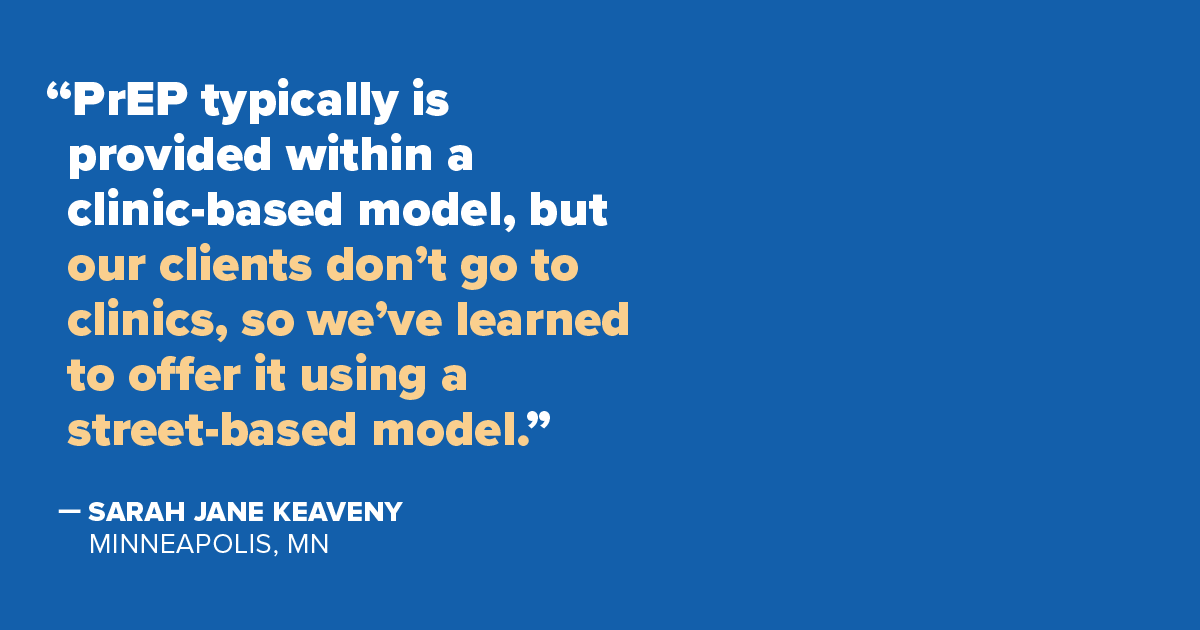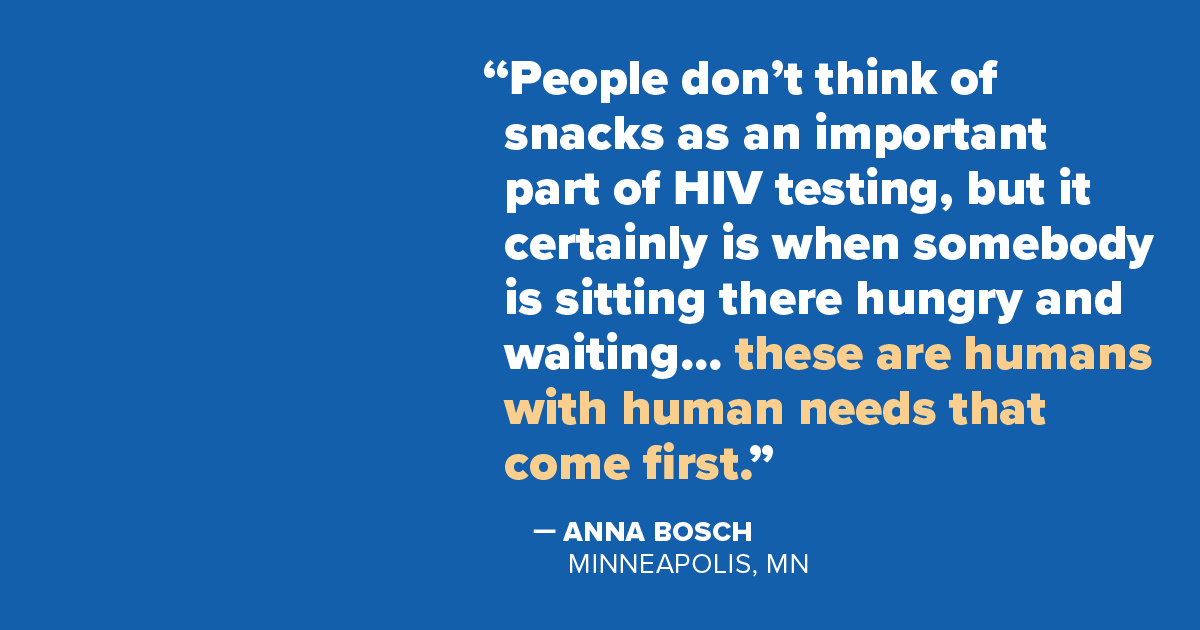CDR Community Spotlights: Minneapolis, Minnesota

In early 2019, HIV was diagnosed in three people screened at the Native American Community Clinic (NACC) in Minneapolis, Minnesota. The screening was routine and conducted through the clinic’s medication-assisted treatment program for people with substance use disorders. During the previous decade, the clinic had only seen a handful of clients with HIV – so discovering three new diagnoses in just a few months was noteworthy.
Later that same year, the Minnesota Department of Health (MDH) conducted an analysis showing that over the past nine months there had been 18 HIV diagnoses in Minneapolis and neighboring St. Paul among people who inject drugs, more than three times the total in a typical year. This unusual increase prompted the state to initiate a cluster investigation. Using tools including partner services interviews and expanded HIV testing within homeless encampments and at harm reduction clinics, health officials had uncovered 26 linked cases by early 2021. They found that nearly half of the diagnoses were among young Native Americans, who typically make up less than 5 percent of people with HIV diagnosed in Minnesota each year.
“Native Americans don’t really show up in HIV data in our area, because the number of infections is so small compared with other groups,” says Dr. Kari Rabie, NACC’s medical director. “So there hasn’t been a focused strategy to support them. This outbreak made their needs visible in a way we hadn’t seen before.”
Rabie notes that while rates of HIV have typically been low, the Native American community faces a host of health challenges rooted in historical trauma. And because community members are tightly interconnected, once HIV was introduced, it was easy for the virus to be transmitted, especially among people who inject drugs.
With just a few clients with HIV before the outbreak, NACC had always referred HIV patients to infectious disease specialists outside the clinic for their HIV care and treatment. Often clients returned saying they had dropped out of HIV care, because they felt unwelcome and stigmatized. Prompted by the outbreak, the clinic partnered with the Midwest AIDS Training and Education Center (MATEC) on a five-year grant focused on improving HIV capacity. Now, NACC is providing direct, comprehensive HIV care and is in the process of qualifying as an HIV Center of Excellence.
“Learning how to provide HIV treatment services has been a challenge, but also very rewarding,” says Jace Gilbertson, nursing manager for NACC’s HIV programs. “In a big system, our patients can get lost or pushed to the side. For us, it’s different – each person is someone we know and care about. We can provide a place where they feel respected and safe, and meet all their needs whether that be antiretroviral treatment, or help with medical insurance, or sage for smudging,” which can be part of a purification ritual conducted by some Native Americans.
![Quote from Jace Gilbertson, Nursing Manager, Minneapolis, MN: 'Each person [with HIV] is someone we know and care about. We can provide a place where they feel respected and safe, and meet all their needs whether that be antiretroviral treatment, or help with medical insurance, or sage for smudging.'](/hiv/images/policies/cdr/spotlights/cdc-policy-cdr-stories-mn-quote1-1200x630.gif?_=16639)
The HIV outbreak response in Minneapolis has underscored the importance of addressing social determinants of health. To meet the needs of its clients, the Native American Community Clinic (NACC) improved its capacity and now offers comprehensive, culturally affirming HIV care.
The state-led cluster detection and response effort also revealed that many people receiving new HIV diagnoses reported experiencing homelessness. Like NACC, Hennepin County Health Care for the Homeless stepped up to a leadership role in the response. In early 2020, the group assigned public health nurse Sarah Jane Keaveny to focus on HIV street outreach. Keaveny, who had previously been focused on providing mental health and harm reduction services to people in Minneapolis encampments, travels each afternoon to places where people experiencing homelessness are likely to be gathered.
Keaveny offers her clients a range of critical health care services, including HIV and STI testing, information about HIV prevention, syringe services, help with accessing housing and benefits, and basic health services, such as wound care. Thanks to an innovative telehealth model, she can also now use her mobile phone to help people obtain and use PrEP in the field, without making in-person clinic visits.
As another part of the cluster response, the MDH invited frontline service providers, including Health Care for the Homeless, NACC, and other local and state organizations to come together to share ideas and information about how to improve services for the community. The weekly meetings, called HIV Outbreak Public Engagement (HOPE), are led by Anna Bosch, operations coordinator of the outbreak response for MDH.
“At MDH, we’re experts in public health, but we’re not experts in what it’s like to be living in an encampment or coping with a substance use disorder,” says Bosch. “It’s important for us to have consistent, authentic conversations with the people who are providing and receiving services on the ground, so we can better understand what’s really happening and be sure we’re supporting practical interventions that can make a significant difference.”

The Minneapolis HIV outbreak required a tailored response to meet the needs of people with HIV or those who could be better served by HIV prevention and are experiencing homelessness; new HIV street outreach services address those needs holistically.
“PrEP typically is provided within a clinic-based model, but our clients don’t go to clinics, so we’ve learned to offer it using a street-based model,” Keaveny explains. “A doctor can prescribe PrEP over the phone as part of a telehealth visit. I draw blood for testing in the field, and later I can help clients get to the pharmacy or even bring the medications directly to their tent once a week.”
The ideas that come out of HOPE meetings underscore the complex, interconnected needs of those affected by the HIV outbreak. For example, participants have urged HIV testing sites to offer food and other incentives.
“People don’t think of snacks as an important part of HIV testing, but it certainly is when somebody is sitting there hungry and waiting,” says Bosch. “Yes, we have these important clinical services like HIV testing, but HIV testing doesn’t happen in a vacuum. These are humans with human needs that come first.”
By strengthening the ties among community organizations and creating spaces for organizations to share feedback and insight with MDH, HOPE also helps sustain connections between providers and the highly mobile populations they serve.
“Every time a camp is dispersed, we lose track of the people who were living there,” says James Schmidt, who conducts street outreach for NACC. “If someone from another group can help me reconnect with them, I can maintain that relationship and maybe over time convince them to come into the clinic and engage with the system to get the help they need.”

Weekly meetings of frontline service providers underscored the complex, interconnected needs of people affected by the HIV outbreak and the importance of addressing those needs comprehensively, including by offering food and other services and incentives at HIV testing sites.
These relationships provided essential support to Minneapolis organizations and community members as they experienced COVID-19 lockdowns and widespread community pain and anger following the murder of George Floyd, who died just a few blocks away from NACC.
“This year has challenged us all to redefine what success looks like,” says Bosch. “We haven’t ended HIV transmission in Minneapolis. But we have created a space where people come together to identify and attempt to solve real, on-the-ground problems – and those are necessary first steps.”